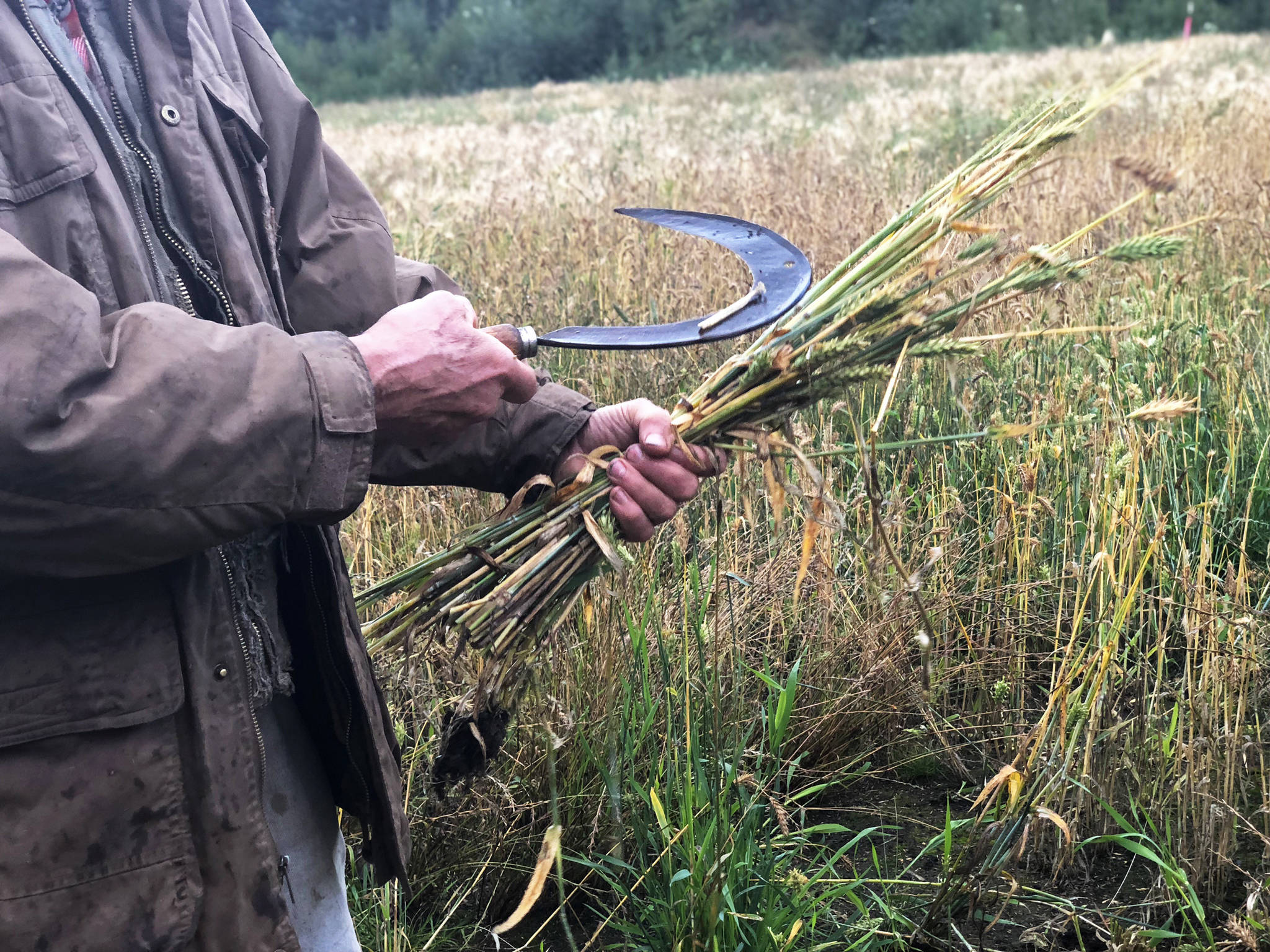Something new is sprouting in Cooper Landing.
Perched on a hill in an old gravel pit on Snug Harbor Road, just under an acre of golden barley blows in the wind that sweeps through the valley. Walking through the field with a scythe and a bucket, Robert Gibson harvests it the traditional way — gathering a handful and with a skrish cutting it into a neat bundle.
This harvesting method is how he grew up doing it in Sweden, another high-latitude country. Cereal crops do grow in Alaska, but haven’t been a traditional agricultural product on the Kenai Peninsula beyond for hay in the past. Plus, Cooper Landing isn’t exactly suited for broad fields of grain like the Midwest, Gibson said.
“There is not any flat ground to do anything with in Cooper Landing,” he said.
This barley was an experiment started on a limited basis by the Kenai Peninsula Borough. When they discovered they’d have some spare space and organic material left on the surface of a gravel pit after the Snug Harbor Road improvement project was done, it provided an opportunity to experiment with a potentially new crop, said Marcus Mueller, the land management officer at the borough.
He said they reached out to the Plant Materials Center in Palmer and got some seeds for four different types of barley, each of which is suitable for different uses.
“Vegetation is one of our big management tools in land management,” Mueller s aid. “Groundcover is so important… we’re kind of learning how to be effective with that. We’re gaining experience in doing planting generally, looking at doing how barley does — oftentimes oats are used for groundcover.”
This spring, they seeded the ground by hand and stood back, with relatively little cultivation, to see how things would shake out. Some of the species came up very effectively while another— the one best suited for beer brewing, unfortunately for hopeful craft breweries— didn’t do as well.
A week or two ago, Mueller let Cooper Landing residents know through the community newsletter the Cooper Landing Crier that there were harvest opportunities in the field. On Friday, Gibson brought in some of his harvest to the borough.
“I made a big bundle of it and brought that over to (Mueller),” Gibson said. “I would say (the grain) is about 90 percent mature right now.”
A lifelong farmer and rancher, Gibson moved to Alaska in the 1990s and served as the president of the Alaska Farm Bureau, working on issues related to agricultural land. He said he worked with Mueller over the winter about the plans for the barley planting and other issues related to agricultural land.
Barley is the largest cereal crop grown in Alaska, in part because of the low heat unit requirement for maturity, followed by oats, according to a 2009 crop profile from the University of Alaska Fairbanks. The vast majority of Alaska’s grains are grown in the Interior, largely in the Delta Junction region in the Tanana Valley. The grains are used largely by the agricultural industry as animal feed and bedding. Companies like Alaska Flour Company started producing barley flour in 2011 with Delta Junction-grown grain, distributing flour to stores around the state.
Gibson said he used traditional harvesting methods on the small field in Cooper Landing because its size didn’t make machinery practical and demonstrated how to use scything, hand sickle and hand-picking methods that individuals growing small fields of grain could use to harvest it. An ardent gardener who grows many of his own vegetables and berries, Gibson said he’s interested in pursuing ways to increase agriculture on the Kenai Peninsula in the future.
Mueller said that was one of the goals of the experiment in Cooper Landing, both for purposes of managing the borough’s land portfolio and exploring another potential agricultural product on the Kenai Peninsula.
“We were (looking for answers to) the basic question of whether a cereal crop would work,” he said.
Victoria Petersen contributed report. Reach her at vpetersen@peninsulaclarion.com. Reach Elizabeth Earl at eearl@peninsulaclarion.com.

